Ever craved your favorite Asian dish but didn’t want to leave home? Good news – you don’t have to! With a few key ingredients and simple techniques, you can recreate those mouthwatering restaurant flavors right in your kitchen. From spicy Sichuan dishes to comforting noodle soups, these recipes will transform your home cooking game.
1. Kung Pao Chicken: Spicy, Sweet, and Irresistibly Delicious
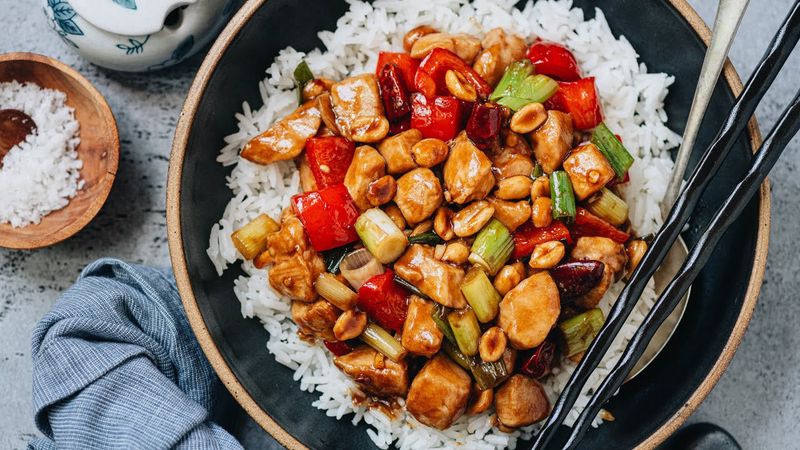
This Sichuan classic delivers an explosion of flavors with its perfect balance of heat, sweetness, and savory elements. The secret lies in the sauce – a magical combination of soy sauce, vinegar, and a touch of sugar.
Dried chilies provide that signature spicy kick, while roasted peanuts add a wonderful textural contrast and nutty flavor. For authentic results, use Sichuan peppercorns to create that distinctive numbing sensation that makes this dish so addictive.
Prep your ingredients beforehand, as the cooking process moves quickly. Once you master this recipe, you’ll never need takeout again!
2. Tonkotsu Ramen: Rich, Creamy Pork Broth Goodness
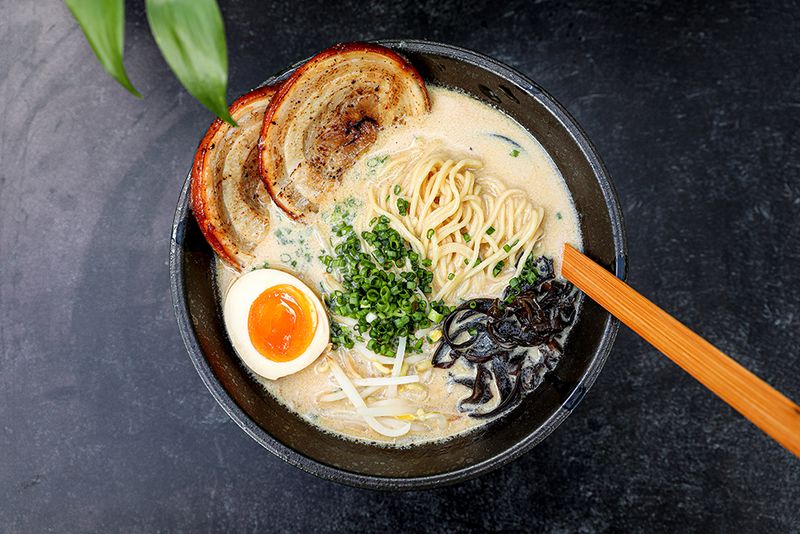
Making restaurant-quality tonkotsu ramen at home might seem intimidating, but breaking it down into components makes it totally doable. The soul of this dish is the milky, collagen-rich pork bone broth that simmers for hours, extracting every bit of flavor.
Fresh noodles (store-bought is fine) provide the perfect chewy base. Top with chashu (braised pork belly), a soft-boiled egg, green onions, and nori for that authentic ramen shop experience. The broth can be made ahead and frozen, making this impressive meal accessible even on busy weeknights.
3. Pad Thai: The Street Food Superstar You Can Master
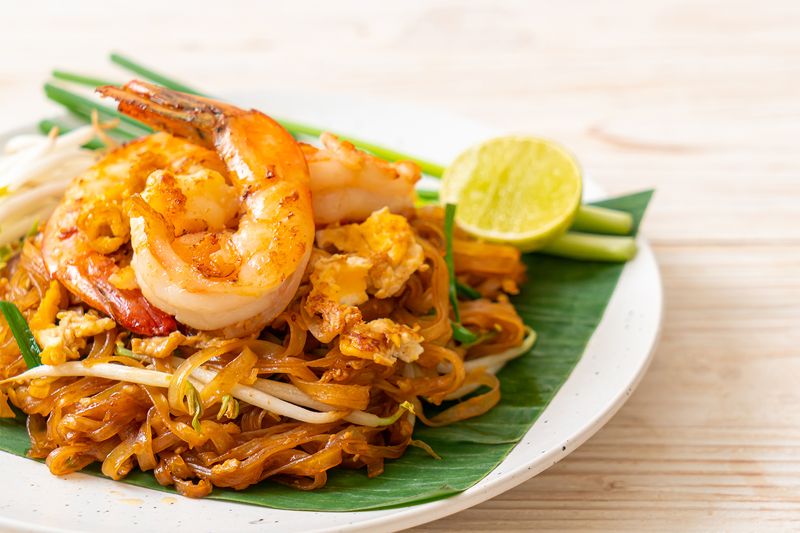
Nothing captures Thailand’s vibrant street food scene like a plate of perfect pad thai. The magic happens when you nail the sauce – that harmonious blend of tamarind paste, fish sauce, and palm sugar creates the dish’s signature tangy-sweet profile.
Rice noodles provide the chewy foundation, while bean sprouts, peanuts, and lime add freshness and crunch. Cooking happens lightning-fast, so organization is key – have all ingredients prepped and ready before hitting the wok. A final garnish of crushed peanuts, cilantro, and a lime wedge elevates your homemade version to sidewalk-café status.
4. Bibimbap: Korea’s Colorful Rice Bowl Delight
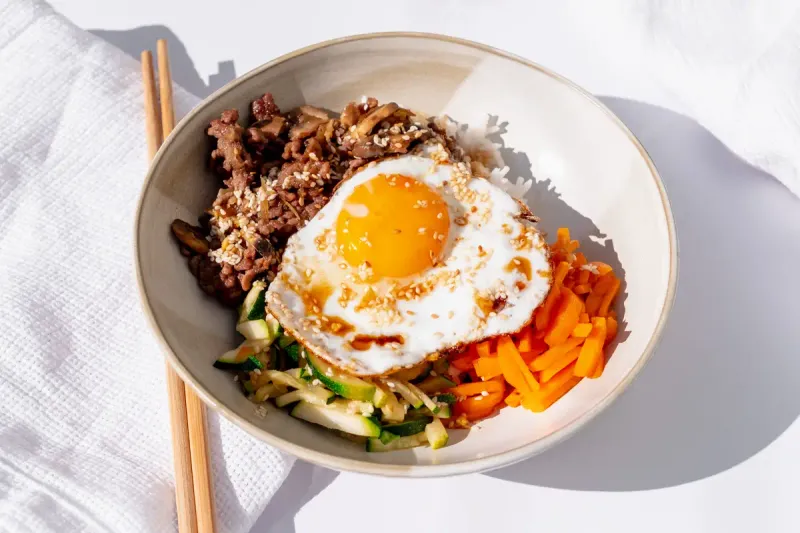
Bibimbap translates to “mixed rice” in Korean, but this vibrant dish delivers so much more than its humble name suggests. The visual appeal comes from arranging colorful vegetables – spinach, carrots, mushrooms, and bean sprouts – in sections atop warm rice.
A runny-yolked fried egg crowns the creation, and gochujang (Korean chili paste) provides the signature spicy kick that brings everything together. The sizzling stone bowl version (dolsot bibimbap) creates a deliciously crispy rice crust. Customize with your favorite vegetables and protein – traditional options include bulgogi beef or tofu for vegetarians.
5. Vietnamese Pho: Soul-Warming Broth with Endless Possibilities
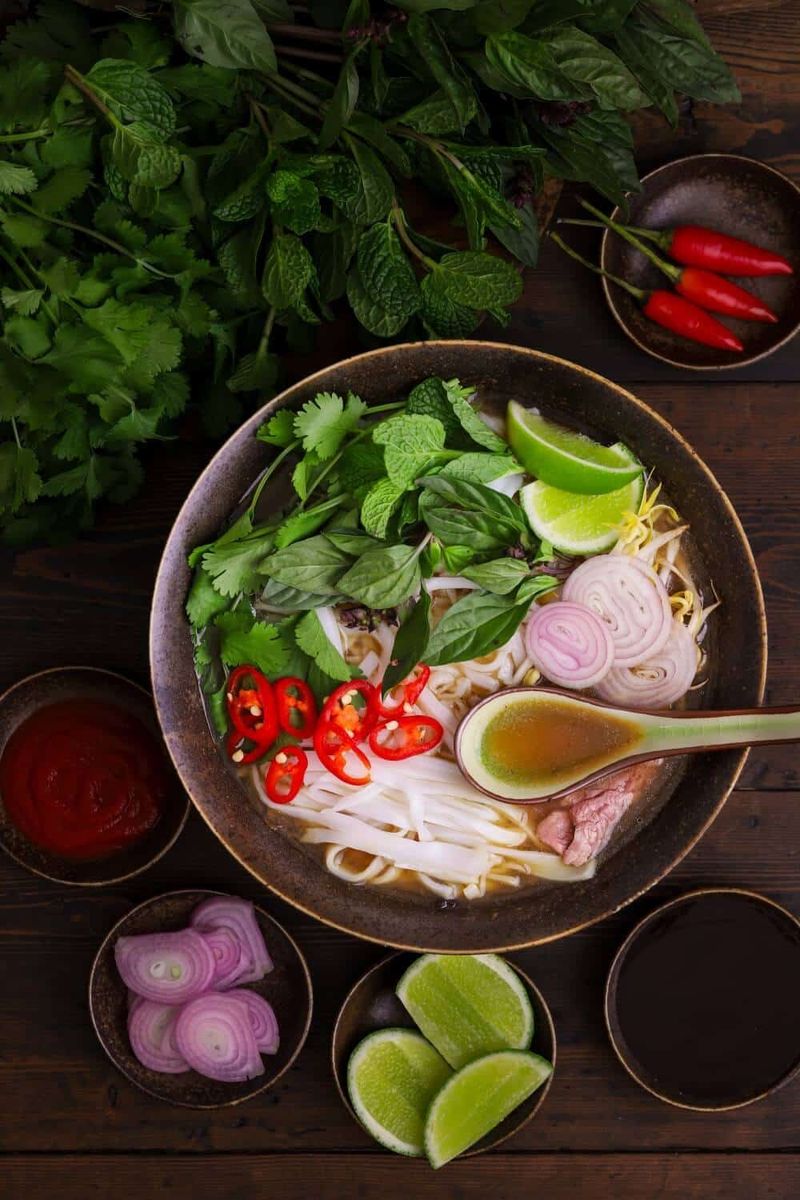
The heart of exceptional pho lies in its aromatic broth – beef bones slowly simmered with charred ginger, onions, and a carefully balanced spice bundle of star anise, cinnamon, and cloves. This fragrant foundation takes time but requires minimal effort.
Rice noodles cook separately until just tender, then join thinly sliced raw beef in the bowl. The magic happens when scalding broth is poured over, instantly cooking the meat to perfect tenderness.
Fresh herbs, bean sprouts, lime, and chili make this dish truly personal – everyone can customize their bowl to taste. Your kitchen will smell like a Hanoi street corner!
6. Butter Chicken: Creamy Tomato-Based Curry That Melts Hearts

Butter chicken (murgh makhani) offers the perfect introduction to Indian cooking with its approachable yet complex flavor profile. Marinating chicken in yogurt and spices is the crucial first step – this tenderizes the meat while infusing it with flavor.
The velvety tomato-based sauce gets its richness from butter and cream, balanced by warming spices like garam masala, turmeric, and fenugreek leaves. A touch of honey or sugar counters the tomato’s acidity. Serve with fluffy basmati rice or warm naan to soak up every drop of that incredible sauce. Your home will fill with irresistible aromas that rival any restaurant!
7. Scallion Pancakes: Flaky, Crispy Chinese Flatbreads

The secret to restaurant-quality scallion pancakes lies in creating those signature flaky layers. The dough itself is simple – just flour, water, and salt – but the rolling technique creates the magic.
Brushing the dough with sesame oil before sprinkling with chopped scallions ensures flavor in every bite. The coiled rolling method creates those beautiful layers that puff and separate when pan-fried to golden perfection.
Serve with a dipping sauce of black vinegar, soy sauce, and a touch of chili oil for an authentic experience. These addictive pancakes make perfect appetizers or side dishes for any Asian meal.
8. Chicken Katsu: Japanese Crispy Cutlet Perfection
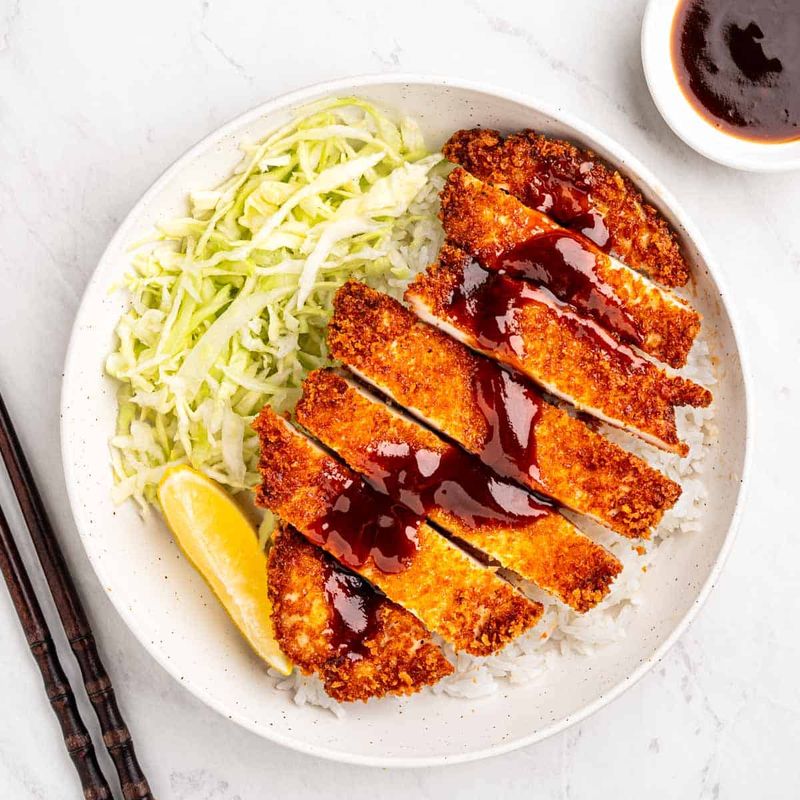
Achieving that signature katsu crunch at home is easier than you might think! Pounding chicken breasts to even thickness ensures quick, consistent cooking and maximum tenderness.
The breading process follows the classic three-step method: flour, egg, then panko breadcrumbs – but it’s Japanese panko that makes all the difference with its airy, flaky texture. Pressing the breadcrumbs gently onto the chicken helps them adhere properly.
Serve with tonkatsu sauce (or make your own with ketchup, Worcestershire, soy sauce, and a touch of sugar) and shredded cabbage for that authentic Japanese experience. This crowd-pleaser converts even picky eaters!
9. Green Curry: Thailand’s Aromatic Spicy-Sweet Sensation
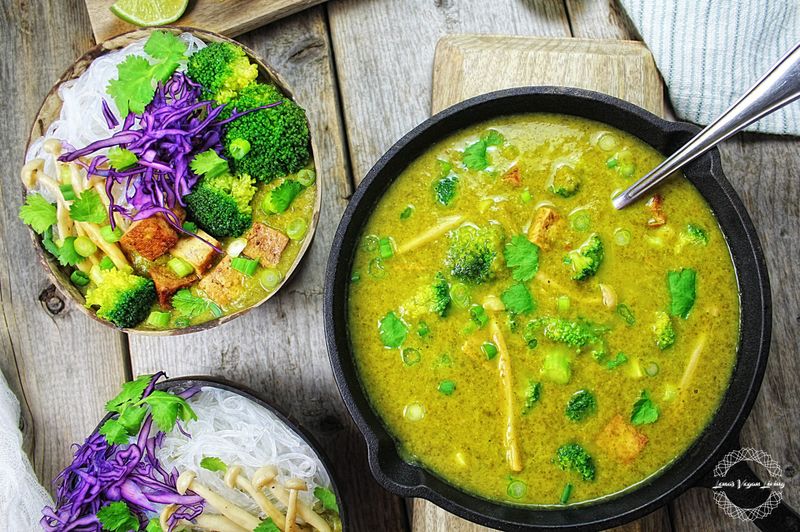
Green curry’s vibrant color and complex flavor profile might seem challenging to recreate, but with the right ingredients, you’ll capture authentic Thai flavors at home. Starting with homemade or quality store-bought green curry paste builds the foundation for this aromatic dish.
Coconut milk provides the creamy base, while makrut lime leaves, Thai basil, and fish sauce add layers of authentic flavor. The vegetables – Thai eggplant, bamboo shoots, bell peppers – absorb the curry’s essence as they simmer.
Balance is key: the curry should harmonize spicy, sweet, salty, and herbal notes. Adjust to your taste, but don’t shy away from heat!
10. Korean Bulgogi: Sweet-Savory Marinated Beef Heaven
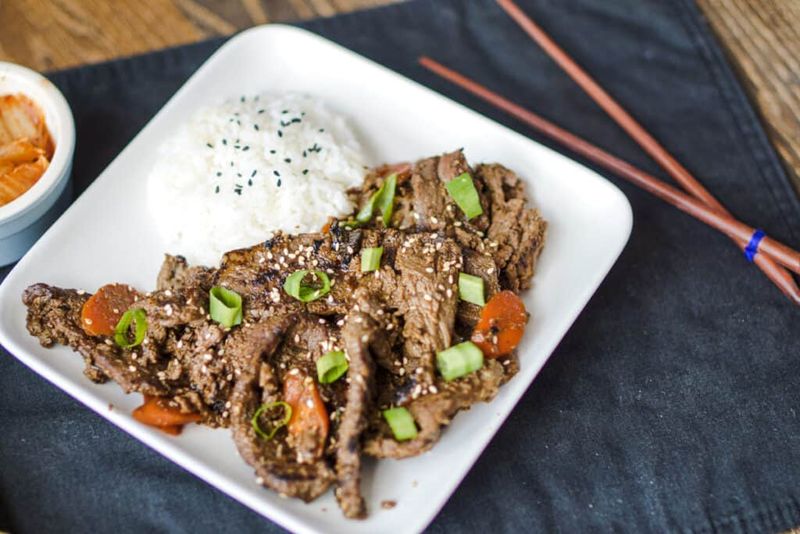
Bulgogi literally means “fire meat” in Korean, and this thinly sliced, marinated beef delivers major flavor with minimal effort. Freezing the beef for 30 minutes before slicing helps achieve those signature paper-thin slices that cook in minutes.
The marinade combines Asian pear (a natural tenderizer), soy sauce, brown sugar, sesame oil, and garlic – creating that perfect balance of sweet and savory. Don’t rush this step; letting the meat marinate overnight yields the best results.
Traditionally grilled but equally delicious stir-fried, bulgogi pairs perfectly with lettuce wraps, rice, and banchan (Korean side dishes) for a complete Korean feast.
11. Malaysian Laksa: Spicy Coconut Noodle Soup That Wows
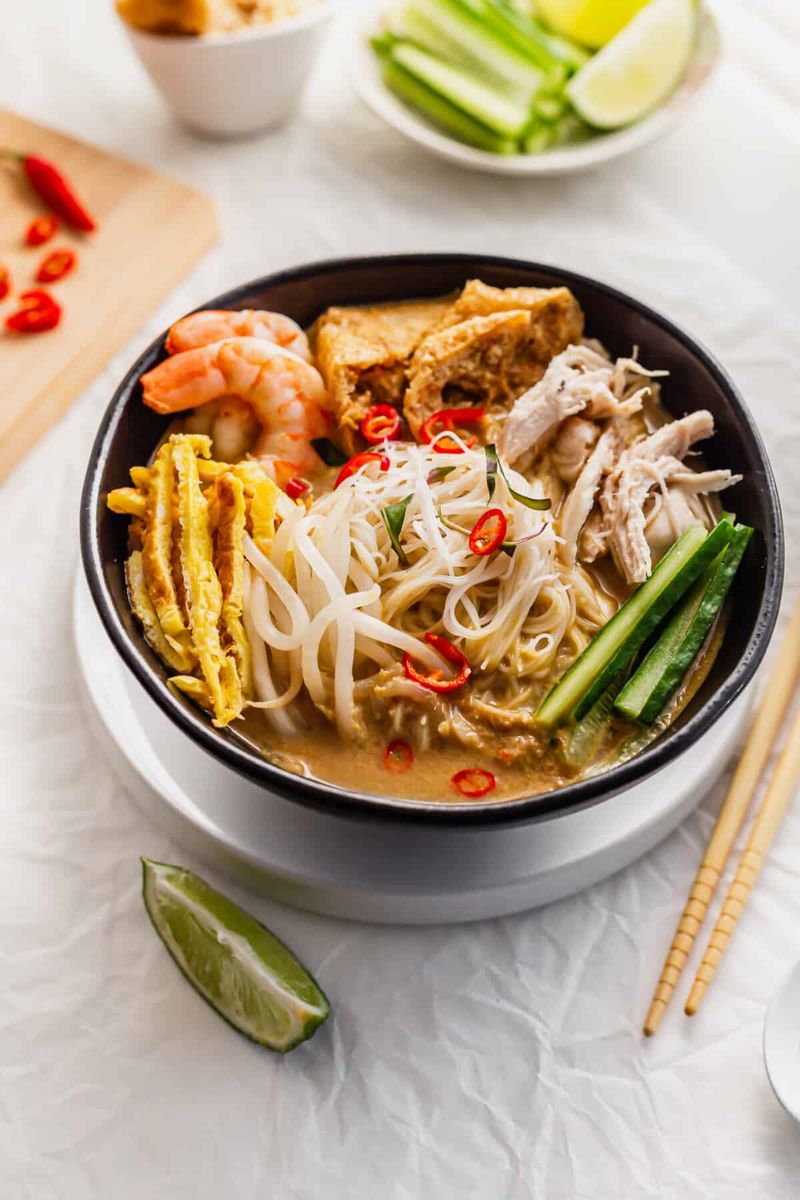
Few dishes deliver as bold and balanced a flavor profile as Malaysian laksa—a steaming bowl where spicy heat, tangy brightness, and creamy richness collide. At its core lies a deeply aromatic paste made from lemongrass, galangal, chilies, and shrimp paste, forming the soul of the soup.
Coconut milk mellows the heat and creates a velvety broth that envelops rice noodles and protein options like shrimp, chicken, or tofu. A final flourish of fresh herbs and lime juice lifts the dish with vibrant, citrusy notes. While laksa varies by region, this version highlights the beloved curry laksa, known for its indulgent, spice-forward flavor.
Though the depth of flavor may sound complex, the ingredients are increasingly easy to find, thanks to well-stocked supermarkets and Asian grocery stores.
12. Chana Masala: Hearty Spiced Chickpea Stew
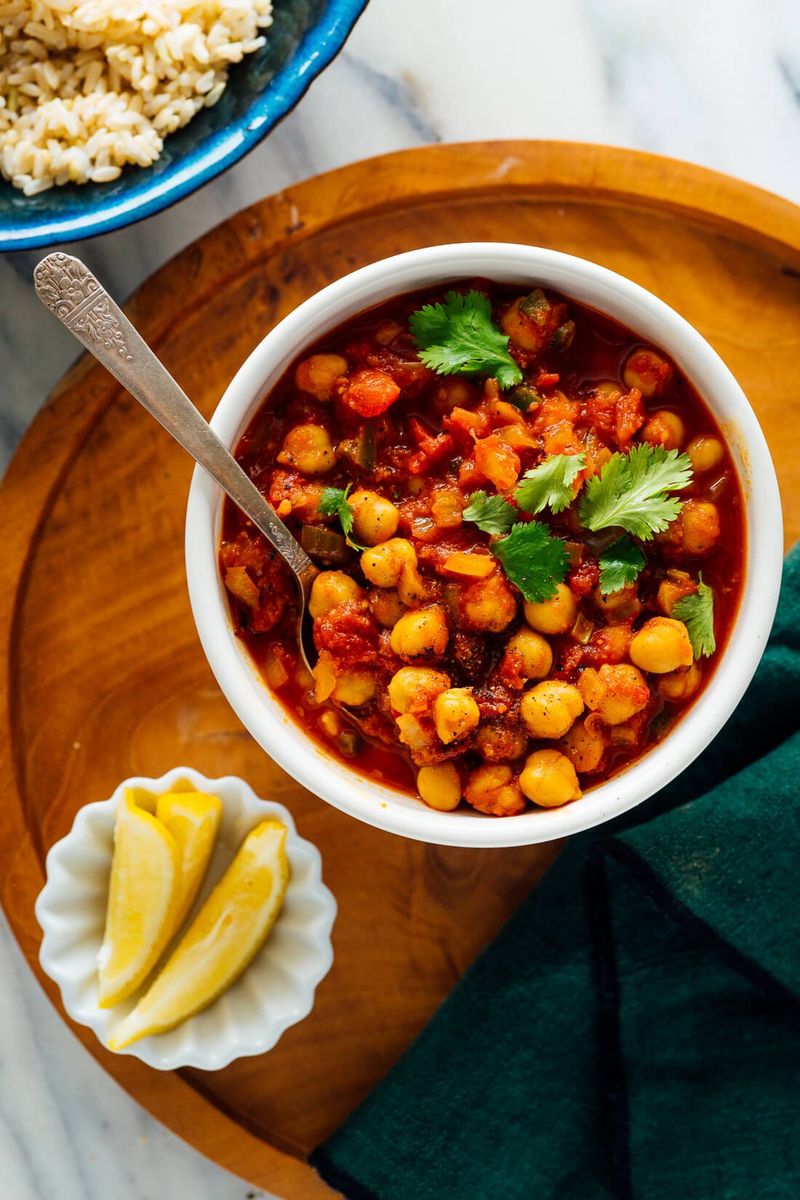
This North Indian vegetarian classic proves that plant-based dishes can deliver deep, satisfying flavors. Building layers of flavor begins with blooming whole spices – cumin seeds, cardamom, and cinnamon – in hot oil to release their essential oils.
The tomato-onion gravy forms the dish’s backbone, enriched with ginger, garlic, and a blend of ground spices. Chickpeas simmer until they absorb all those aromatic flavors while maintaining their texture.
A final touch of garam masala and fresh cilantro brightens everything. Serve with rice or warm naan bread for a complete meal that might just convert dedicated meat-eaters to occasional vegetarianism!
13. Mapo Tofu: Sichuan’s Fiery Bean Curd Masterpiece
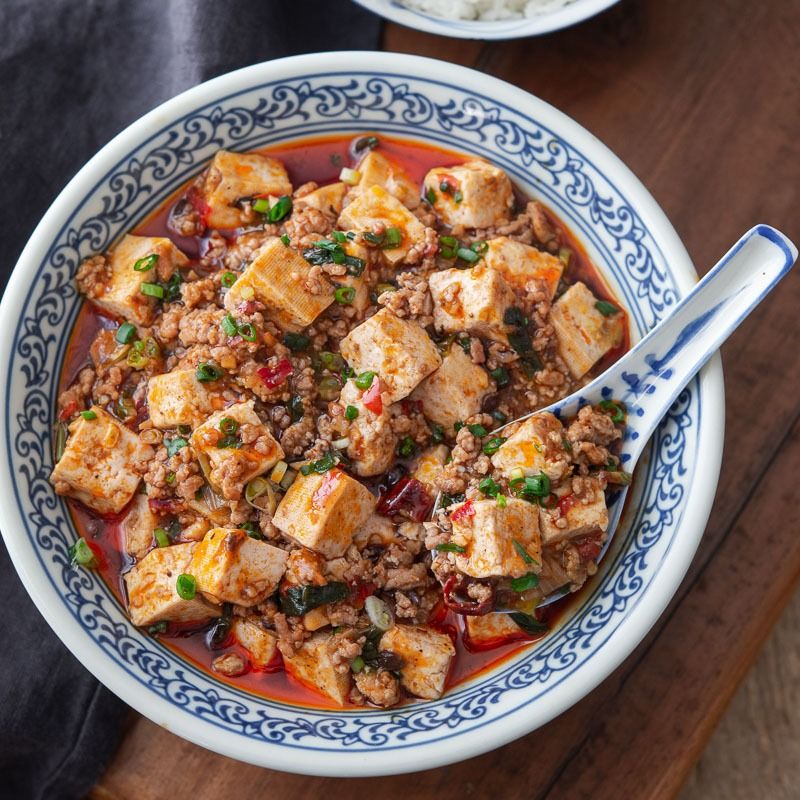
Mapo tofu might look simple, but this Sichuan specialty delivers complex flavors that dance on your palate. The dish’s characteristic ma-la (numbing-spicy) profile comes from two essential ingredients: Sichuan peppercorns and doubanjiang (fermented broad bean paste).
Silken tofu provides the perfect creamy canvas for the bold, spicy sauce. Ground pork adds richness, though vegetarian versions can substitute mushrooms. The bright red oil might look intimidating, but you can adjust the heat level to your preference.
Serve with plenty of steamed rice to balance the intensity and soak up that flavorful sauce – this dish converts even dedicated tofu skeptics!
14. Miso Soup: Umami-Rich Japanese Comfort in a Bowl

Miso soup appears deceptively simple, but achieving that perfect umami-rich broth requires attention to detail. Everything starts with dashi – the foundational Japanese stock made from kombu (dried kelp) and bonito flakes that provides the soup’s distinctive savory backbone.
The miso paste – choose white for milder flavor or red for more robustness – should never be boiled, as high heat destroys its delicate flavors and probiotic benefits. Add it off-heat, stirring until just dissolved. Silken tofu, wakame seaweed, and green onions complete this nourishing soup.
Master this fundamental Japanese recipe, and you’ll have comfort food ready in minutes whenever you need it.
15. Banh Mi Sandwich: Vietnamese-French Fusion Perfection

A true fusion masterpiece, the banh mi showcases Vietnam’s ability to transform a French baguette into something uniquely its own. The foundation is all about the bread—light, airy inside with a shatteringly crisp crust that perfectly cradles the vibrant fillings.
Pickled daikon and carrots deliver a sharp, crunchy contrast to the savory richness of the protein, whether you go classic with pork or opt for chicken, tofu, or mushrooms. Fresh herbs like cilantro, along with cucumber and jalapeños, layer in brightness and a touch of heat.
What makes a banh mi unforgettable is the creamy, umami-packed combo of pâté and mayo, often spiked with sriracha, that binds all the flavors together. Compact yet bursting with complexity, this sandwich is a portable celebration of culinary harmony.
16. Nasi Goreng: Indonesia’s Aromatic Fried Rice

Nasi goreng transforms leftover rice into an explosion of flavors and textures that’s beloved throughout Indonesia and Malaysia. Day-old rice works best – its drier texture prevents clumping and absorbs flavors beautifully.
The dish’s distinctive reddish-brown color comes from kecap manis (sweet soy sauce) and sometimes tomato or chili paste. Shallots, garlic, and shrimp paste create a fragrant base, while vegetables and protein – chicken, shrimp, or both – make it a complete meal.
Crowned with a sunny-side-up egg and served with crispy shallots, cucumber, and prawn crackers, this humble fried rice elevates leftovers to crave-worthy status.
17. Burmese Tea Leaf Salad: Tangy, Crunchy Flavor Explosion
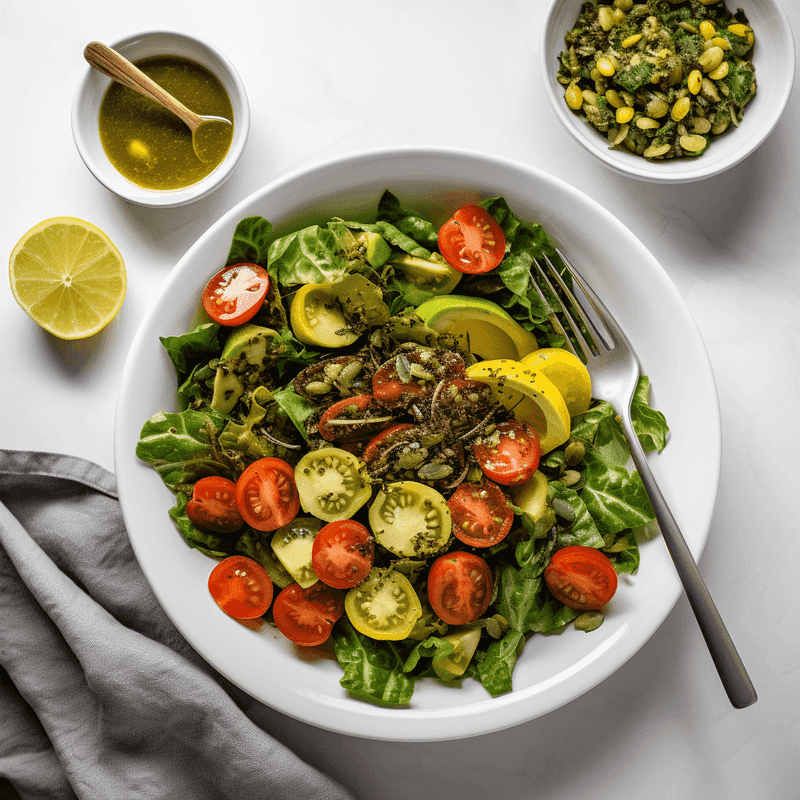
Vibrant, bold, and texturally exciting, lahpet thoke—Burma’s iconic tea leaf salad—is a dish unlike any other. At its heart are fermented tea leaves, prized for their tangy, earthy flavor that forms the foundation of this unforgettable salad.
Each bite is a symphony of contrasts: the tartness of the tea leaves, the crunch of fried beans, seeds, and peanuts, the freshness of shredded cabbage or lettuce, and the deep umami of fish sauce or dried shrimp. While sourcing fermented tea leaves may take a little effort (usually through specialty markets or online shops), the payoff is well worth it.
Traditionally presented with its components arranged separately and tossed just before eating, this customizable salad invites diners to adjust garlic, chili, and lime to their taste. Unique and full of personality, lahpet thoke makes a striking and delicious appetizer that sparks conversation as easily as it satisfies the palate.
Leave a comment